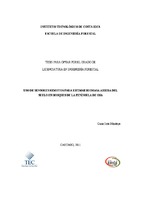| dc.contributor.author | Soto-Montoya, Casia | |
| dc.date.accessioned | 2015-04-14T17:14:51Z | |
| dc.date.available | 2015-04-14T17:14:51Z | |
| dc.date.issued | 2011 | |
| dc.identifier.uri | https://hdl.handle.net/2238/5739 | |
| dc.description | Proyecto de Graduación (Licenciatura en Ingeniería Forestal) Instituto Tecnológico de Costa Rica, Escuela de Ingeniería Forestal, 2011 | es |
| dc.description.abstract | A study using 18 plots from the "Biodiversity Project and Carbon Sequestration in
the Forests of Peninsula de Osa" was conducted to estimate above ground forest
biomass. The plots correspond to different forest succession stages (from 5
years old to primary forest). The main objective was to create a model to
estimate forest biomass using remote sensing data.
Several mathematical models were evaluated. These models used the original
bands from SPOT satellite imagery and vegetation indices such as SAVI, MSAVI,
GEMI and NDVI. The equation that presented the best fit was B = 458.575 * η,
where η is [2 (NIR-R) NIR +1.5 +0.5 R] / (NIR + R +0.5), NIR is the near infrared
band, and R is the red band from a SPOT image. The model had a coefficient of
determination of 0.802 with a CV% of 52.750.
The main achievement of the research was to propose a methodology to probe
and create models of biomass estimation using satellite images. The main
limitation found was the use of an image with low spectral resolution. | es |
| dc.description.sponsorship | Instituto Tecnológico de Costa Rica. Escuela de Ingeniería Forestal. | es |
| dc.language.iso | es | es |
| dc.publisher | Instituto Tecnológico de Costa Rica | es |
| dc.rights | acceso abierto | es |
| dc.subject | Satélites | es |
| dc.subject | Parcelas | es |
| dc.subject | Modelos | es |
| dc.subject | Carbono neutral | es |
| dc.subject | Emisiones | es |
| dc.subject | Deforestación | es |
| dc.title | Uso de sensores remotos para estimar biomasa arriba del suelo en bosques de la Península de Osa | es |
| dc.type | proyecto fin de carrera | es |


